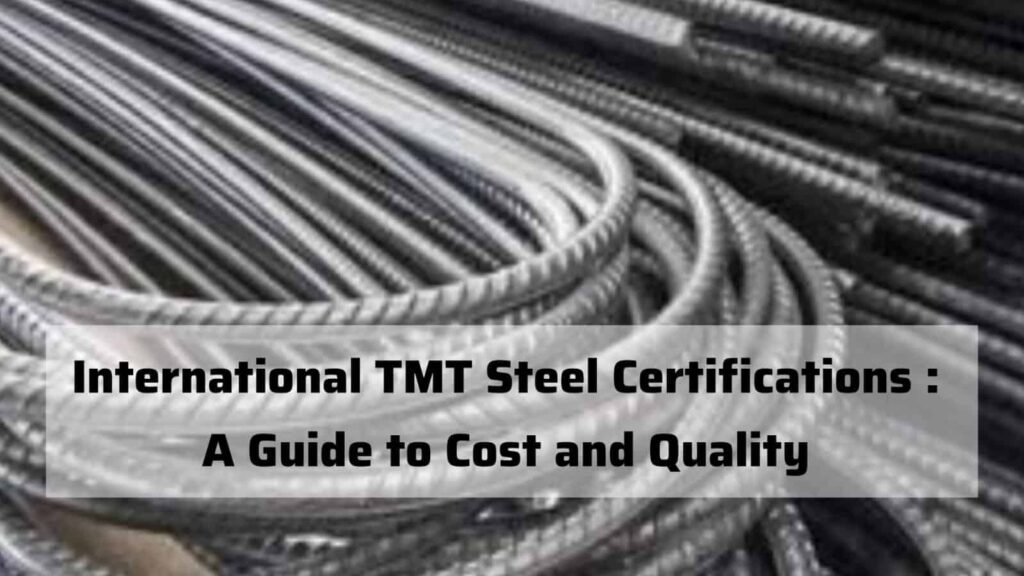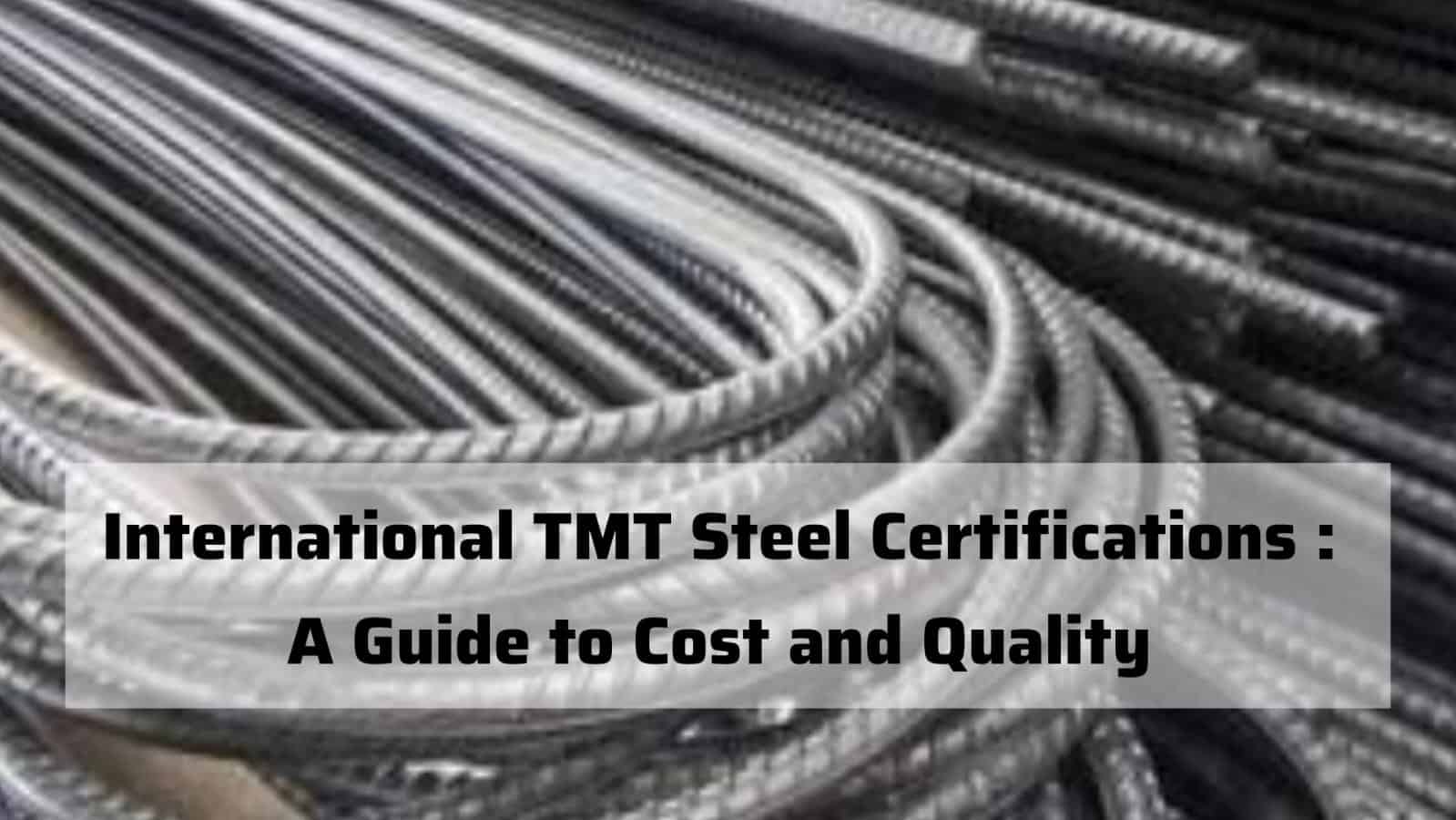In the global construction field, the TMT (Thermo Mechanically Treated) steel bars have a great function, being used in supporting buildings and infrastructure. Despite the ever-widening recognition of NABL/BIS in India as national standards, worldwide certifications like ISO prove to provide an additional guarantee of product quality. Let’s delve into the prominent international TMT steel certifications and their impact on cost:

Key International TMT Steel Certifications:
Several globally recognized organizations set standards for TMT steel quality:
ASTM (American Society for Testing and Materials): ASTM International, a US-based organization, issues multiple standards for TMT bars which include bond strength, chemical composition, and geometrical tolerances to name a few. Famous standards, such as ASTM A615 and A706, are also used.
BSI (British Standards Institution): BSI, a UK-based Business Standards Institution (BSI), incorporates internationally recognized standards for TMT (thermo-mechanically treated) or heat-treated metal bars construction. BS 4449 is the identification of a commonly used standard that stipulates the requirements as to the chemical composition, mechanical properties, and the testing procedures used.
DIN (Deutsches Institut für Normung): DIN, namely the German Institute for Standardization, develops specifications for a range of steel products among which are TMT bars included. DIN 10088 is one of the standards that offer a comprehensive summary of chemical composition, mechanical characteristics, and dimensional tolerances too.
Impact of Certifications on Cost:
TMT bar brands, which have been approved by these international organizations, are, more often than the national standards-based ones, reputed to be a little bit pricier. This premium price arises due to several factors:
Stringent Quality Requirements: International standards, in contrast to national standards, are frequently observed by higher quality control requirements It follows that there should be a comprehensive testing program that meets regulations, hence the production costs are expected to shoot up.
Third-Party Verification: Access to international certifications is frequently based on external testing by laboratories approved to work under the rules of respective certification bodies. This naturally gets added to the control grid, thus enhancing the final output and price.
Global Recognition: International certifications connect opportunities in more countries that indicate markets for foreign sales and eventually the international pricing policies.
Benefits of International Certifications:
While the initial cost might be higher, international certifications offer significant benefits.
Enhanced Quality Assurance: Tougher standards that are subject to independent audits are proof that TMT bars display high quality and impeccable performance.
Wider Acceptance: International certification is used for a simplified approvals procedure of projects and materials acknowledgment in the states which includes acceptance of these standards.
Improved Brand Reputation: Using TMT bars confirming international standards is a way of showing an interest in quality, which will further improve brand image and can even create an opportunity to extend the business reach on an international level.
Conclusion:
TMT Steel having an international certification implies a higher level of quality calls for a price premium as well, and brand recognition and acceptance being wider. If the specific business case calls for the most profound performance, international adequacy, and reputation-building of brand assets, the decision to choose the TMT bars that are recognized all over the globe can be a tactical investment. Yet these projects may benefit from the adoption of practices that meet national standards at the lowest possible cost while still keeping with existing regulations. However, at the end of the day, the choice will depend on if the project requirements are specialized, restricted by budgets, or if a significant level of


